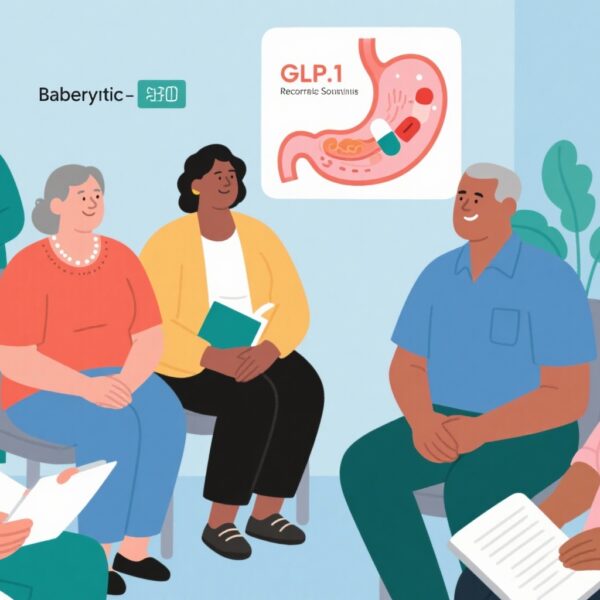Highlight
- Prehabilitation combining structured physical exercise and nutritional supplementation significantly reduces 90-day postoperative morbidity after major hepatectomy in sarcopenic patients.
- The PREHEP randomized clinical trial demonstrated an absolute risk reduction of 36.7% in overall complications and eliminated major complications in the prehabilitation group.
- Muscle mass and strength improved significantly only in patients receiving the multimodal prehabilitation program, underscoring the importance of targeted interventions for sarcopenia.
Study Background
Sarcopenia, defined as the progressive loss of skeletal muscle mass and function, has emerged as a critical independent predictor of adverse outcomes following major abdominal surgeries, including liver resection. Patients undergoing major hepatectomy with sarcopenia are at considerable risk for postoperative morbidity due to impaired physiological reserves and reduced regenerative capacity. Given the increasing recognition of sarcopenia as a marker of frailty, targeted strategies to improve muscle health prior to surgery—known as prehabilitation—are under investigation as potentially modifiable factors to optimize perioperative outcomes.
Major liver resections remain a cornerstone treatment for various malignant and benign hepatobiliary diseases. However, they are associated with substantial morbidity—particularly in patients who require portal vein embolization (PVE) to induce hypertrophy of the future liver remnant. Optimizing these patients before surgery is critical to improving morbidity profiles and survival outcomes.
Study Design
The PREHEP trial was a single-center, open-label, randomized clinical trial conducted at a tertiary hepatobiliary referral center in Italy from April 2022 to January 2025. It enrolled adult patients with radiologically and functionally confirmed sarcopenia who were scheduled for major hepatectomy and portal vein embolization to promote future liver remnant hypertrophy.
Participants were randomized 1:1 into two groups: a prehabilitation intervention group and a standard care control group. The prehabilitation program lasted six weeks and included three key components:
- Daily walking activities tailored to patient capacity.
- Supervised in-hospital exercise sessions twice weekly focusing on resistance and functional training.
- Branched-chain amino acid and immune nutritional supplementation to support muscle synthesis and immune function.
The control group received routine perioperative care without any structured preoperative intervention.
The primary endpoint was postoperative morbidity within 90 days, evaluated by the Clavien-Dindo classification. Secondary endpoints included measures of muscle mass and strength to assess the physiologic impact of prehabilitation.
Key Findings
A total of 70 patients with confirmed sarcopenia were enrolled, with 60 patients (median age 69 years, 53.3% male) included in the final efficacy analysis. The majority underwent right hepatectomy (88.3%) after portal vein embolization (86.7%), reflecting a representative sample of high-risk hepatectomy candidates.
Results demonstrated a substantial reduction in postoperative morbidity in the prehabilitation group compared to controls. Specifically, only 4 of 30 patients (13.3%) in the intervention arm experienced any postoperative complications versus 15 of 30 (50%) in the control arm. This corresponded to an odds ratio of 0.15 (95% CI, 0.04-0.55; P = .004), indicating an 85% relative reduction in odds of complications and an absolute risk reduction of 36.7%, with a number needed to treat of just 3.
Notably, all major complications (Clavien-Dindo grade III or higher) were confined to the control group (20%, 6/30 patients; effect size d = 0.40; P = .02), emphasizing the efficacy of combined exercise and nutritional prehabilitation in preventing severe adverse events.
Physiologically, only patients undergoing the prehabilitation program showed significant improvements in muscle mass and strength metrics, confirming the biological effect of the intervention in mitigating sarcopenia prior to surgery.
These findings demonstrate that targeted preoperative optimization can translate into clinically meaningful reductions in postoperative morbidity and support the paradigm shift toward multimodal prehabilitation in liver surgery.
Expert Commentary
As highlighted in recent guidelines and expert consensus, sarcopenia represents a modifiable risk factor that, if addressed preoperatively, may reduce surgical complications and improve recovery. The PREHEP trial provides robust randomized evidence supporting the integration of an exercise-nutrition prehabilitation protocol into standard surgical pathways for patients with sarcopenia undergoing major hepatectomy.
The marked reduction in postoperative morbidity and elimination of severe complications suggest that prehabilitation enhances physiological resilience by improving muscle mass and functional status, which are vital for liver regeneration and recovery after hepatic resection.
One limitation of the study is its single-center design, which may affect generalizability across diverse healthcare settings. Additionally, long-term outcomes such as survival or quality of life were not reported and warrant further study.
Nevertheless, the trial’s strengths include the rigorous sarcopenia diagnosis combining radiological and functional measures, the tailored and supervised exercise program, and the standardized nutritional supplementation targeting branched-chain amino acids known to stimulate muscle protein synthesis and immune function.
Conclusion
The PREHEP randomized clinical trial firmly establishes that a 6-week multimodal prehabilitation program incorporating physical exercise and nutritional supplementation significantly lowers postoperative morbidity in sarcopenic patients undergoing major liver resection. This strategy improves muscle health and surgical outcomes, underscoring the clinical importance of addressing sarcopenia in the perioperative period.
These findings support the routine implementation of structured prehabilitation in hepatobiliary surgical practice, especially for high-risk populations requiring portal vein embolization. Further multicenter trials and long-term follow-up studies are warranted to confirm these benefits and establish standardized protocols.
Incorporating preoperative exercise and nutrition into patient care pathways represents a tangible, evidence-based approach to enhance recovery and reduce the burden of surgical complications in patients undergoing complex liver surgeries.
References
Berardi G, Cucchetti A, Colasanti M, Angrisani M, Moschetta G, Chiappori D, Marini A, Antonelli G, Ferretti S, Meniconi RL, Guglielmo N, Mariano G, Usai S, Ettorre GM. Prehabilitation With Exercise and Nutrition to Reduce Morbidity of Major Hepatectomy in Patients With Sarcopenia: The PREHEP Randomized Clinical Trial. JAMA Surg. 2025 Oct 1;160(10):1068-1075. doi: 10.1001/jamasurg.2025.3102. PMID: 40864449; PMCID: PMC12392143.
ClinicalTrials.gov Identifier: NCT05281211.



